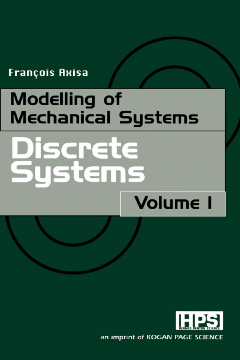
Additional Information
Book Details
Abstract
This first volume is concerned with discrete systems – the study of which constitutes the cornerstone of all mechanical systems, linear or non-linear. It covers the formulation of equations of motion and the systematic study of free and forced vibrations. The book goes into detail about subjects such as generalized coordinates and kinematical conditions; Hamilton’s principle and Lagrange equations; linear algebra in N-dimensional linear spaces and the orthogonal basis of natural modes of vibration of conservative systems. Also included are the Laplace transform and forced responses of linear dynamical systems, the Fourier transform and spectral analysis of excitation and response deterministic signals.
Forthcoming volumes in this series:
Vol II: Structural Elements; to be published in June 2005
Vol III: Fluid-structure Interactions; to be published in August 2006
Vol IV: Flow-induced Vibrations; to be published in August 2007
* Presents the general methods that provide a unified framework to model mathematically mechanical systems of interest to the engineer, analyzing the response of these systems
* Focuses on linear problems, but includes some aspects of non-linear configuration
* Comprehensive coverage of mathematical techniques used to perform computer-based analytical studies and numerical simulations
* Discusses the mathematical techniques used to perform analytical studies and numerical simulations on the computer
“For this is not just a translation; much has been added, refined and polished, to make this book an excellent addition to anyone’s bookshelf, whose interests lie in Dynamics, Vibrations, or Fluid Structure Interactions.
— Michael Païdoussis, Emeritus Professor in the Department of Mechanical Engineering, McGill University, Canada, in the Journal of Fluids and Structures, 2004
“I feel sure that this work by François Axisa will reward those who study it with new and unusual insights into the fascinating and notoriously difficult-to-master subject of predicting and controlling the vibration properties of the complex practical structures encountered across a wide range of engineering sectors.
— D.J. Ewins, Professor of Vibration Engineering in the Department of Mechanical Engineering, Imperial College London, UK
